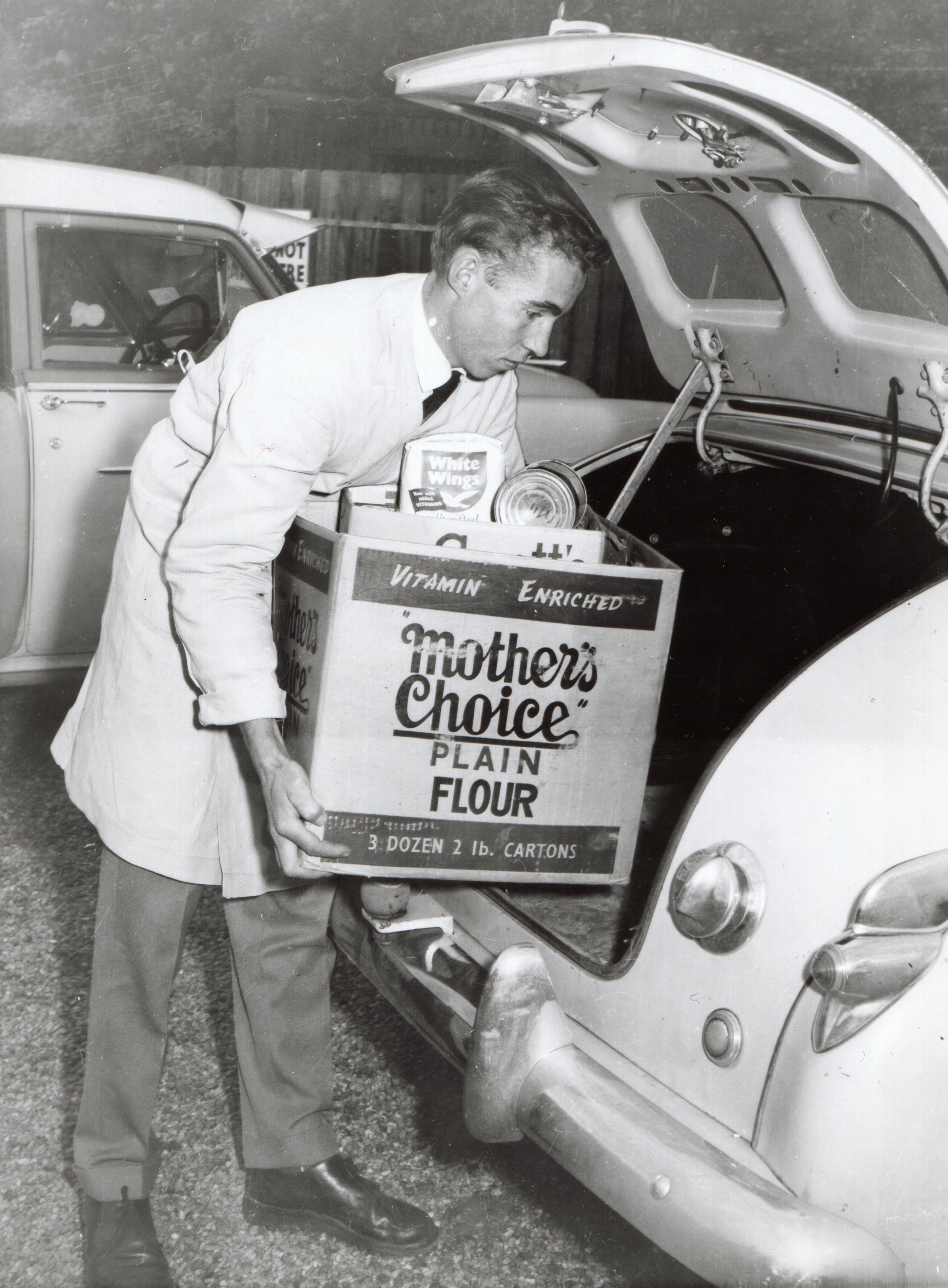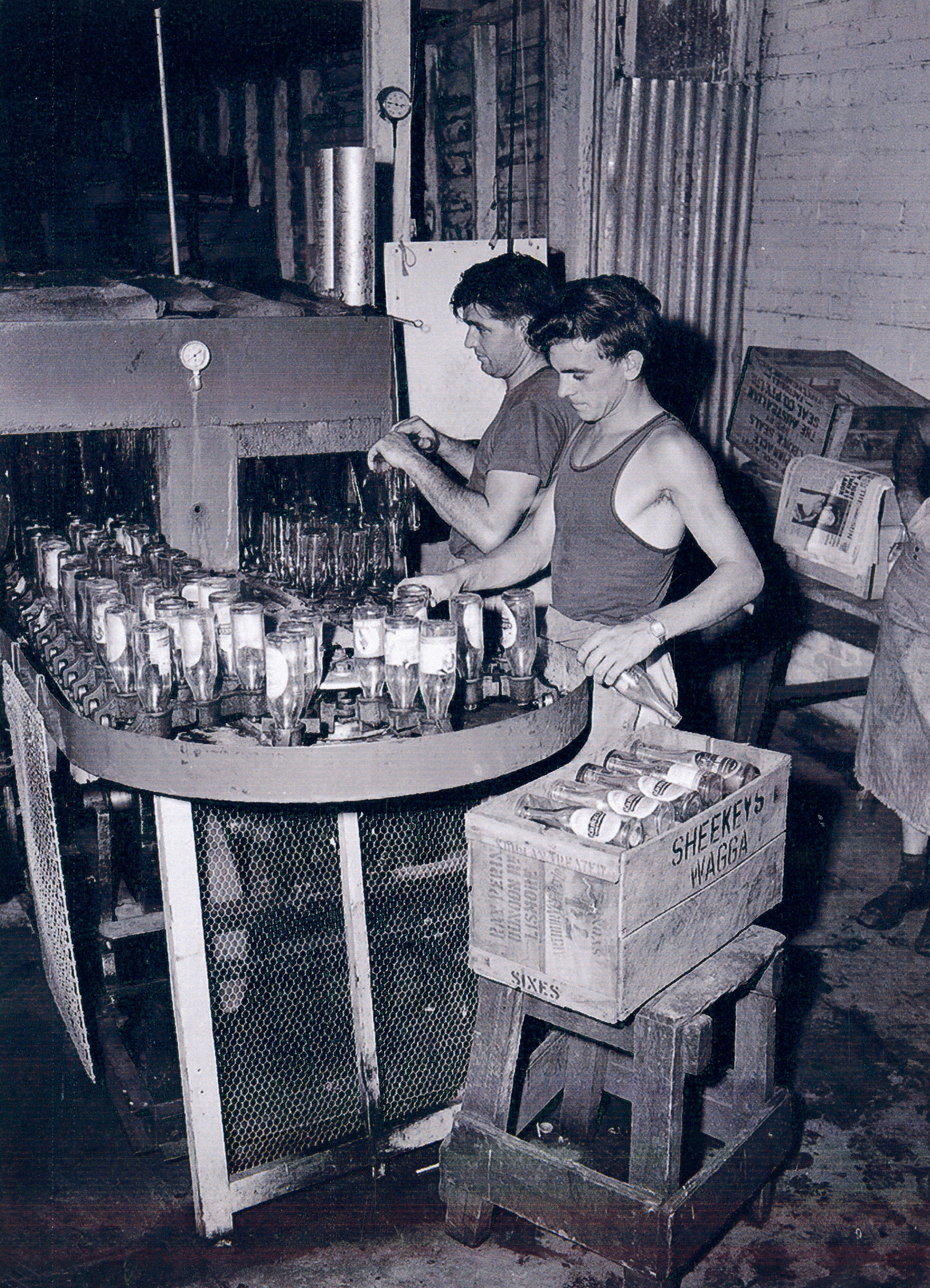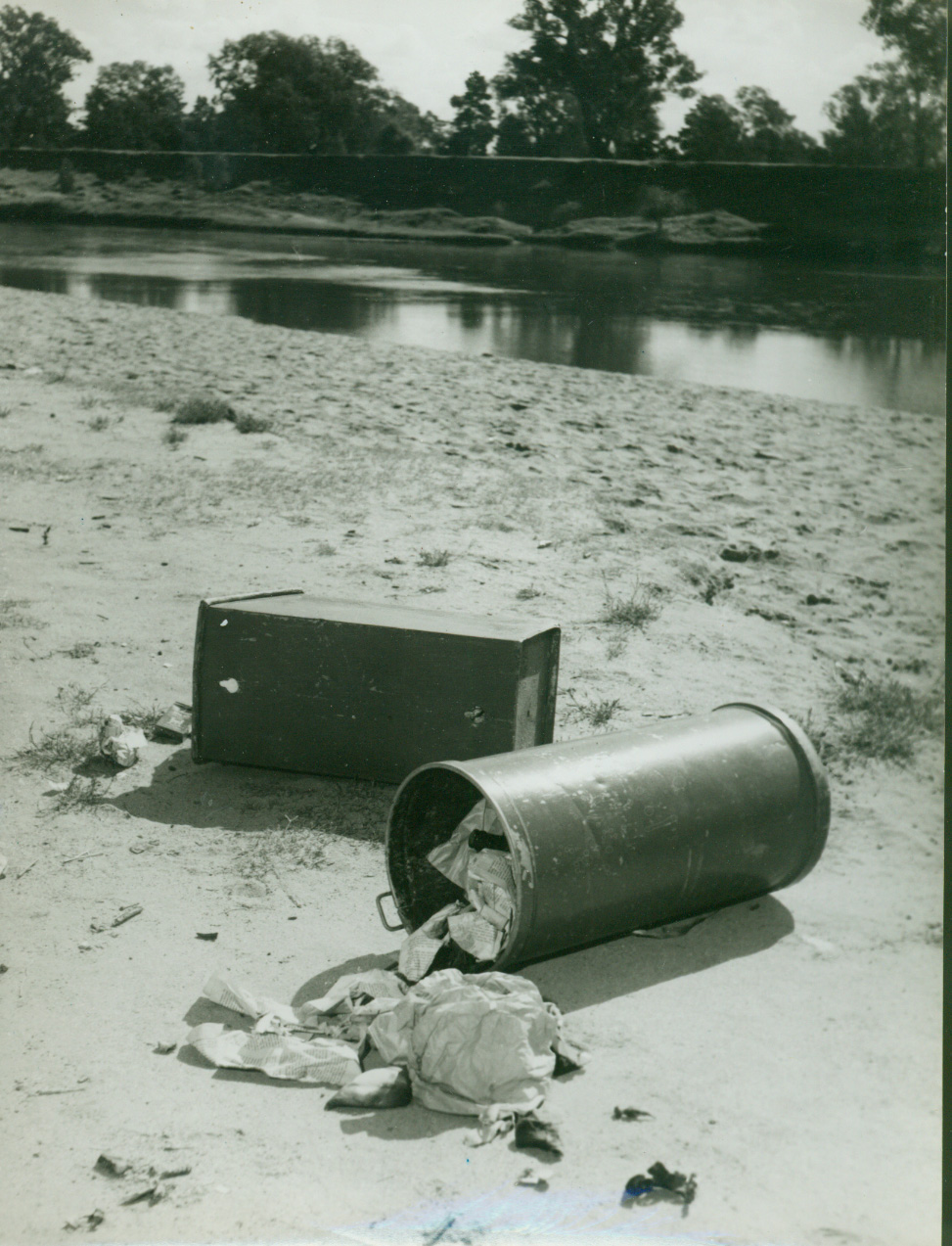Plastic Timeline
-
1860s — 1930s
Key moments in eary plastics
-
1862
The first plastic "Parkesine", a mouldable plastic invented by Alexander Parkes, is presented at the Great London Exhibition
… a substance hard as horn, but as flexible as leather, capable of being cast or stamped, painted, dyed or carved…
-
1908
Cellophane is invented by Swiss chemist Jacques E. Brandenburger. The original formulation, made from wood cellulose, is an early example of ‘bioplastics’.
Cellophane became the first see-through packaging, enabling people to choose food based on how it looked, without sacrificing hygiene or freshness. The first uses included wrapping for chocolates, perfume and flowers. Read more
-
1933
Polyethylene (also known as polythene) is discovered by accident at a chemical plant in Northwich, England. By 1938, this versatile plastic is being produced on an industrial scale. Today, polyethylene is used to manufacture food packaging, plastic shopping bags, pipes, electrical cable insulation and even artificial hips.
-
1950s
Plastics – a revolutionary material
-
1950s
Mass consumer plastics take off and begin to touch everything from toys to food. In these early days, plastics are seen as clean and modern.
-
1950s-1970s
Freezers and microwaves make it possible to replace home-cooked meals with frozen packaged foods and TV dinners. The idea of 'convenience' depends on plastic packaging.
As cities grow larger, life becomes busier and families (especially women) have less time for cooking, shopping and housework
-
LIFE Magazine publishes a large story called 'Throwaway Living', promoting the idea that plastic is a cheap material designed to be used briefly and then discarded. Disposability celebrates the idea of 'easy come, easy go'. It encourages people to discard without concern and obscures the fact that plastic is one of the most durable materials ever invented.
-
1960s
Public concerns about litter emerge - Keep Australia Beautiful
-
1960s
As urban waste and pollution grows, people become concerned about the state of the environment. Recycling emerges as one of the solutions with its focus on waste management rather than disposal. Most of what went into household recycling bins was packaging waste like beverage bottles and food containers. While paper and glass were relatively easy to recycle plastic is not.
-
1963
Wagga's first shopping centre, The Turvey Tops Shopping Centre, opens on Fernleigh Road . Self-service supermarkets completely change the way people shop. Before plastic packaging, the grocer used to mediate the customer's shopping experience and select and package goods for them. With self-service the consumer can now choose their own goods, and packaging - especially plastic packaging - becomes a critical device for keeping food fresh,untouched and hygienic. Packaging also presents information such as ingredients lists, nutrition panels and use-by dates, and facilitates more sophisticated food branding and advertising.
-
Mid-60s
Keep Australia Beautiful was created to tackle increasing urban litter. Much of this litter came from disposable fast food packaging and was plastic. Straws, chip packets, burger containers and the like created concerns about the decline of civic order. The source of this litter was identified as ‘the litterbug’ or ‘untidy citizens’ who had not learnt their 'outside manners'. The industries producing this huge increase in packaging waste were not held responsible.
-
1965
The one-piece polyethylene shopping bag is invented, and quickly begins to replace paper and cloth bags in Europe
-
Recycling is introduced in Wagga through Kurrajong Recycling Centre
-
1970s
-
Coca-Cola introduces a single-use plastic PET bottle to replace its iconic glass one. The PET bottle becomes the most popular beverage container displacing recyclable glass and aluminium transforming the beverage industry and dramatically increasing global plastics waste.
Today, people around the world buy almost a million plastic beverage bottles every minute. Read more
-
1979
Single use plastic bags have almost entirely replaced paper bags around the world
-
1980s
Oil and plastics industry pushes back promoting the benefits of plastic
-
Growing public outcry about the plastics waste problem
Clean Up Australia Day. The first community event involves 300,000 Australians. From 1990 to 2006, Australians collect over 200,000 tonnes of rubbish at this annual event.
-
1989
Single use plastic bags have almost entirely replaced paper bags around the world
Clean up the Harbour Day (Sydney) became Clean Up Australia Day
Amidst a growing public outcry about the plastics waste problem, executives from Exxon, Chevron, Amoco, Dow, DuPont, Procter & Gamble and others in the oil and plastics industry plan a USD$50 million a year advertising campaign promoting the benefits of plastics. Read more
-
1990s
Accumulating plastics waste in oceans, on land and in bodies
-
1990s
Oil and plastics companies invest in an increasing number of commercials and messaging about recycling plastic.
At the same time, oil and plastics companies invest in an increasing number of commercials and messaging about recycling plastic, to appease public alarm about environmental impacts and keep plastics sales strong. Read more
-
1991
The first major Australian PET recycling plant opens in Wodonga (ACI Petalite). PET (polyethylene terephthalate) is a type of resin and a form of polyester; it is commonly labelled with the code on or near the bottom of bottles and other containers. PET has some important characteristics such its strength, thermo-stability, gas barrier properties and transparency.
-
1992
On 9th March 1992, Council introduced a household weekly collection service in Wagga for recyclable materials including glass, paper, plastic and aluminium. This was operated by Kurrajong Recyclers
-
1993
Campaign goes global. The first 'Clean Up the World' involves approximately 30 million people in 80 countries
-
1997
The Great Pacific Garbage Patch, one of the largest gyres of ocean plastic waste in the world, is discovered by sailor Charles Moore. This enormous collection of plastic pollution threatens marine life and demonstrates the long-lasting and harmful effects of single use plastic products.
Of the 400 million tonnes of plastic produced each year, about one-third ends up in the soil or inland waters. Few people realise that plastic pollution in the soil is between 4 and 23 times higher than in the seas.
Microplastics are tiny pieces of plastic debris in the environment resulting from the disposal and breakdown of consumer products and industrial waste. Microplastics are found in an array of consumer goods, including cosmetics and cleaning products.
"A 2019 study by the University of Newcastle in Australia estimates people may ingest up to 5 grams of plastic every week — about the weight of a credit card. Another study, from Canada, found that people who drink water from plastic bottles wash something like 130,000 microplastic particles down their throats every year. With water from the tap it is just 4,000 particles."
Plastic generates many health risks. Many chemicals are added to plastic to give it desirable characteristics. But these chemicals are hazardous to health and accumulate in indoor air and house dust.
-
2000s
Accumulating plastics waste in oceans, on land and in bodies
-
2004
Around 35 million people from 115 countries remove rubbish from parks, beaches and waterways on 'Clean Up the World Weekend'
-
2011
Worldwide, one million plastic bags are consumed every minute
-
2022
Microplastics found in Antartica - this means microplastics have now been found in every continent on Earth
Single use plastics phase out begins across NSW
-
NOW
Plastics and climate change
-
2023
Some used plastics can be turned into new things, but collecting it, sorting it out and melting it down is expensive. Plastic also degrades, so it can't be reused more than once or twice
New plastic - made from oil and gas - is cheap and of better quality. The oil industry currently makes more than $400 billion a year from new plastics.
-
FUTURE
-
FUTURE
Plastic waste is a key contributor to climate change. If current trends continue, plastics will have caused around 56 gigatonnes of CO2 emissions by 2050
-
2050
NSW Legislation: Major supermarkets plastic packaging reusable, recyclable or compostable by 2025



